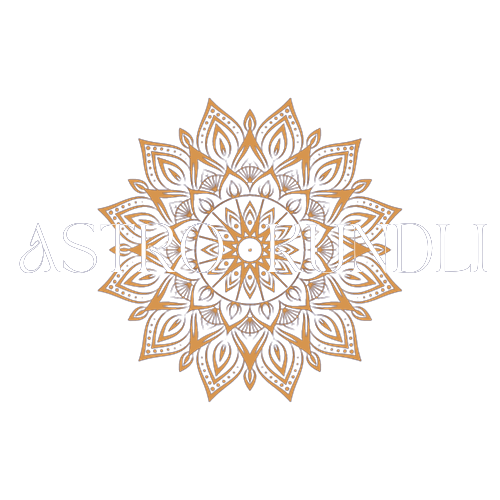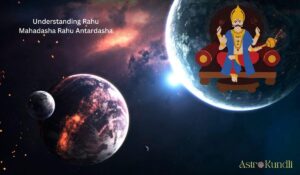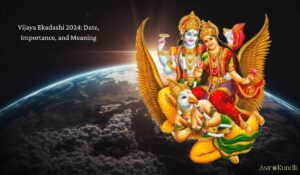Table of Contents
Kamada Ekadashi is a holy day in Hinduism that is celebrated on the 11th day of the waxing moon during the Chaitra month of the Hindu calendar. It’s considered to be one of the most important Ekadashis. It’s believed that people’s wishes are granted on this day.
The name comes from the Sanskrit words ‘kama’ meaning ‘desire’ and ‘da’ which means ‘to give’. Devotees worship and honour the Hindu god of life and death Vishnu on this day.

When is Kamada Ekadashi in 2024?
This year Kamada Ekadashi will be on Friday, April 19th. The fasting and ritual timings may be slightly different depending on location and religious practices. However, here are some general timeframes:
Parana time
This is the time when you can break your fast after sunrise on the next day. The Parana time in 2024 will be between 06:14 AM and 08:48 AM (IST).
Dwadashi time
The is the 12 hour period after Ekadashi. This timeframe is considered auspicious for offering prayers and pujas. The Dwadashi time for Kamada Ekadashi in 2024 starts at 06:14 AM on April 20th and ends at 06:13 AM on April 21st (IST).
Ekadashi Tithi
This refers to the exact phase of the moon on Ekadashi. In 2024 Kamada Ekadashi is on April 19th at 07:42 AM and ends at 04:13 AM (IST). This is considered to be the exact Ekadashi Tithi.
Kamada Ekadashi significance
This Ekadashi is very important in Hinduism for a number of reasons. Reasons include spiritual, historical and personal benefits.
Spiritual Significance
- Fulfillment of desires: Kamada means ‘desire-granting’. The religious followers of Kamada Ekadashi believe that performing the sacred rituals can help them get what they really want in life. Both material and spiritual.
- Moksha and liberation: This Ekadashi is seen as a good way to reach moksha which means freedom from the circle of birth and death. It’s believed that performing the holy rituals on this day can get rid of karmic debts and reach spiritual freedom.
- Worshipping Lord Vishnu: This day is a celebration of Lord Vishnu who is seen as the god of protection. Celebrating this day with devotion and purity is a way to show that you have submitted to Vishnu and are asking for his help, protection and happiness.
Mythological Significance
- Purification and strength: The strict fast and rituals that people perform on this day help in becoming more disciplined, strong and at peace with oneself. It’s like a cleanse of the mind and body.
- Positive beginnings: Kamada Ekadashi is also considered to be the start of a new calendar year by some and a new personal journey. People believe that celebrating this day with devotion will bring them luck, wealth and success in future.
- Community and unity: In certain regions this day is celebrated with religious gatherings, prayers and feasts for the whole community. This practice gives rise to a feeling of belonging, growth socially and happiness.
Essentially, this day is a lot more than just tradition. It has a deeper meaning and as per the Hindu calendar it’s a very important day for spiritual growth, the granting of wishes, personal purification and connecting with the community.
The story behind Kamada Ekadashi
As per Hindu mythology Kamada Ekadashi is related to the story about a man named Lalit and his wife Lalita. The man was a singer and his wife was a dancer. Lalit was one day cursed by a king and turned into a giant demon. A heartbroken Lalita looked for the help of a guru named Shringi for help. Shringi told Lalita to observe Kamada Ekadashi and offer the fruits of her fast to Vishnu as that was the only way to get rid of the curse.
Lalita followed the guru’s instructions and Vishnu was pleased with her devotion. Resulting in him removing the curse on Lalit. He transformed back to human and both husband and wife continued to live in peace.
What are the rituals?
There may be some differences in rituals due to regional traditions and customs and their effects. But here’s a general list of the most important practices:
Preparation
- Observing Dwadashi: On the day before Ekadashi people usually eat light vegetarian meals and avoid grains and rice. Some people also bathe in a holy river or pond.
- Ekadashi morning: Take your morning bath before sunrise on the day of Ekadashi and wear clean or new clothes.
- Fasting: A strict fast is one of the main practices. During this fast people avoid eating or drinking throught the whole day. Some people even avoid sleeping, cleaning or engaging in sexual practices.
Devotional Practices
- Puja: During puja give items like flowers, fruits, incense and lamps as offerings to Lord Vishnu. You can also chant sacred hymns such as “Om Namo Bhagavate Vasudevaya” or recite the Kamada Ekadashi vrat katha.
- Prayer and meditation: While praying or meditating focus on your wants and needs and ask Lord Vishnu for his help. Additionally, many temples have special ceremonies on this day that lasts throught the day.
- Reading sacred scriptures: It is considered auspicious to read parts of religious text like the Bhagavad Gita or the Vishnu Purana.
Breaking Fast
- Parana time: People break their fasts when the Sun rises the next morning (Dvitya). The timing of sunrise may be different for certain locations.
- Simple meal: As per tradition the first propert meal after the fast is a simple vegetarian mean that contains milk products, nuts and fruits. It’s best to start with a small amount and then slowly increase the portion of your meals.
- Giving thanks and offering: Thank Vishnu for breaking the fast and offer him a part of the first meal as prasad.
Additional Practices
- Service and charity: Performing acts of service, volunteering or charity for other people.
- Japa and kirtan: Reciting mantras (japa) or singing religious songs (kirtan).
- Storytelling and sharing: Telling the story of Lalita and Lalit or sharing about past Kamada Ekadashi experiences.
What are some of the mantras for Kamada Ekadashi?
There are certain chants that are believed to be especially lucky for this Ekadashi. Each has its own meaning and benefits. Here are some of the mantras:
Om Namo Bhagavate Vasudevaya
This mantra translates to ‘salutations to Lord Vishnu, the all-pervading one.’ It’s believed that chanting this mantra 108 times or all day can bring blessings from Lord Vishnu.
Om Kamada Ekadashi Vrata Katha
This mantra is a narration of the story of Lalita. It’s believed that reciting it during Ekadashi can remove impurities and provide good luck.
Vishnu Panchakshara Mantra
“Om Namo narayana” is considered to be one of the most powerful chants in Hinduism. People believe that chanting it 108 times during Kamada Ekadasha can bring Vishnu’s grace, remove any bad energy and bring inner peace.
Kamada Ekadashi Stotra
It’s believed that this hymn that praises Lord Vishnu and Kamada Ekadashi can help people get what they truly desire and grow spiritually.
Frequently Asked Questions (FAQs)
Q1: What are the benefits of Kamada Ekadashi?
This Ekadashi is very important in Hinduism for a number of reasons. Reasons include spiritual, historical and personal benefits.
Q2: What are the rules for Kamada Ekadashi vrat?
A strict fast is one of the main practices. During this fast people avoid eating or drinking throught the whole day. Some people even avoid sleeping, cleaning or engaging in sexual practices. People break their fasts when the Sun rises the next morning (Dvitya).
As per tradition the first propert meal after the fast is a simple vegetarian mean that contains milk products, nuts and fruits. It’s best to start with a small amount and then slowly increase the portion of your meals.
Q3: How can I keep Kamada Ekadashi fast?
On the day before Ekadashi people usually eat light vegetarian meals and avoid grains and rice. Some people also bathe in a holy river or pond. Take your morning bath before sunrise on the day of Ekadashi and wear clean or new clothes.
A strict fast is one of the main practices. During this fast people avoid eating or drinking throughoutt the whole day. Some people even avoid sleeping, cleaning or engaging in sexual practices.
People break their fasts when the Sun rises the next morning (Dvitya). The timing of sunrise may be different for certain locations.
As per tradition the first propert meal after the fast is a simple vegetarian mean that contains milk products, nuts and fruits. It’s best to start with a small amount and then slowly increase the portion of your meals.
Thank Vishnu for breaking the fast and offer him a part of the first meal as prasad.




